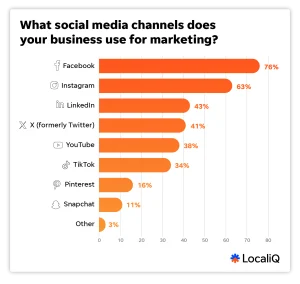Remember playing with Snapchat’s puppy dog ears for the first time? That was the gateway. Today, that same playful technology—augmented reality (AR) filters—has evolved into a powerhouse for brands. It’s no longer just a fun diversion; it’s a fundamental tool for narrative and connection.
Think of AR filters as a magic key. They unlock a door where your audience doesn’t just hear your story—they step right into it. They become the main character. This is the new frontier of brand storytelling and audience interaction, and honestly, it’s where the most memorable connections are being forged.
Beyond the gimmick: AR as a narrative engine
Sure, a funny face filter can get a laugh. But the real magic happens when the filter is the story. Instead of telling customers about your brand’s values or aesthetic, you hand them a lens to experience it firsthand.
Take Gucci, for instance. They launched a filter that let users try on their iconic sneakers. Simple, right? But it was more than a virtual try-on. It was a story of accessibility and aspiration. For a moment, a user could embody the Gucci lifestyle, sharing that moment with their own audience. The story wasn’t “we sell expensive shoes.” It was “you can be part of this world.” That’s a powerful shift.
Weaving emotion into the digital layer
The best AR filters for brand storytelling tap into emotion. They’re not just functional; they’re evocative. A cosmetic brand might create a filter that doesn’t just apply lipstick, but surrounds the user in a shimmering, confetti-like aura that matches the product’s vibe—transforming a simple makeup application into a celebration of confidence.
Or consider a travel company. They could build a filter that transports users to a sunny beach with gentle, virtual waves washing over them, complete with the sound of seagulls. It’s a sensory promise. It’s a story of escape, told not through a brochure, but through a personal, immersive daydream.
The interaction loop: From passive viewer to active participant
Here’s the deal: traditional advertising is a monologue. Social media started a dialogue. But AR filters? They create an interaction loop. The user acts, the filter reacts, and the resulting content is shared, sparking new interactions. It’s a virtuous cycle of engagement.
This loop is gold for audience interaction. It turns content creation over to your community. They are no longer just consumers; they are co-creators, actively shaping and spreading your brand’s narrative with their personal spin.
Driving engagement with interactive AR experiences
How does this look in practice? Let’s break it down.
- Gamification: A snack brand could create a filter where users “catch” falling virtual versions of their product with their mouth. It’s silly, competitive, and incredibly shareable. This kind of branded entertainment builds positive association far better than a static ad.
- User-Generated Content (UGC) Campaigns: A furniture store could develop a filter that places a virtual armchair right in the user’s living room. They can see how it fits, the color, the scale. Then, they’re encouraged to share their setup with a branded hashtag. This provides social proof and invaluable, authentic marketing material.
- Educational Interaction: A tech company could use an AR filter to let users “disassemble” a virtual model of their new gadget, learning about its features in a hands-on, interactive way. It turns a boring specs sheet into an engaging experience.
Why it works: The psychology behind the filter
This isn’t just tech for tech’s sake. It works because it taps into deep-seated human drivers.
Novelty and Play: Our brains are wired to pay attention to new and playful stimuli. An AR filter breaks the scroll-induced trance, offering a moment of unexpected joy.
Self-Expression: Filters are a tool for identity. They allow users to play with a different version of themselves—more glamorous, more humorous, more adventurous. When a brand facilitates that, it builds a powerful, personal bond.
The “IKEA Effect”: This is a cognitive bias where users place a disproportionately high value on products they partially created. When a user creates a piece of content with your brand’s filter, they feel a sense of ownership over it. They value the brand more because they’ve invested their own creativity.
Getting started: A quick roadmap
Feeling inspired? Good. But before you jump in, let’s talk strategy. Throwing a random filter at the wall won’t stick. Your AR filter strategy needs to be intentional.
| Step | Key Question | Example |
| 1. Define the Goal | What do you want to achieve? Brand awareness, product trial, UGC? | A cosmetic brand aims for virtual try-ons to reduce purchase hesitation. |
| 2. Know Your Platform | Where does your audience play? Instagram, TikTok, Snapchat? | A youth-focused brand would prioritize TikTok’s effect house for its viral nature. |
| 3. Story First, Tech Second | What story are you enabling? Is it fun, aspirational, educational? | A coffee brand creates a “Morning Boost” filter that adds energetic, animated steam to your mug. |
| 4. Promote & Integrate | How will people find it? Use influencers, ads, and organic posts to launch it. | Partner with 5 micro-influencers to launch the filter with a unique challenge. |
The future is layered
We’re moving toward a world where the digital and physical are permanently intertwined. AR filters are a early, yet profound, manifestation of this. They offer a glimpse into a future where brand stories aren’t just told—they’re lived.
The brands that will win aren’t necessarily the ones with the biggest budgets, but the ones with the most creative courage. The courage to hand their story over to their audience and say, “Here, you play a part in this.” Because in the end, the most powerful story is the one we tell together.






More Stories
Social Media Strategies for Local Service Businesses: Stop Shouting, Start Connecting
What’s Really Happening on Your Website? Discover Deeper Insights with ViewStats API
How to Build an Authentic Online Community: Tips and Strategies for 2025